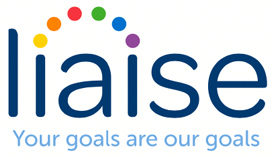Within the framework of the Diagnostic and Statistical Manual of Mental Disorders, 5th Edition (DSM-5), autism spectrum disorder is categorised into three distinct levels. Level 2 represents a more moderate presentation of autism that includes symptoms that are more pronounced in their impact on daily life compared to Level 1, yet not as extensive as those observed in Level 3.
Learn more about autism Level 2, its characteristic traits and behaviours, and discover available avenues for securing the necessary support and resources.
What is Autism Level 2?
Level 2 is the second of the 3 recognised levels of autism. This classification system is intended to provide insight into the unique ways people with autism experience the world around them.
According to the current levels within the DSM-5 diagnostic manual, each level describes the amount of support required by the individual:
- Level 1: Requires Support
- Level 2: Requires Substantial Support
- Level 3: Requires Very Substantial Support
With Level 2 autism, a more moderate manifestation of the condition becomes apparent. People with Level 2 autism encounter difficulties in social interaction and communication, paired with behaviours that tend to be more pronounced than those observed in Level 1.
People with Level 2 autism often require substantial support to navigate various aspects of their lives. While they may engage in social interactions, they might find it challenging to understand social cues, leading to misunderstandings or difficulties in building relationships. Forming and maintaining friendships might prove to be more difficult than for people with Level 1 autism.
People with all levels of autism usually find solace in established routines. Predictability offers them a sense of security and helps in managing the sensory sensitivities that often come with autism. Coping with unexpected changes or novel situations could be considerably distressing for them.
It’s important to note that like every individual on the autism spectrum, those at Level 2 possess unique strengths and qualities that can contribute significantly to their lives and the lives of those around them. By understanding the nuances of Level 2 autism and embracing tailored approaches to support, we can help these individuals lead fulfilling and meaningful lives that harness their potential.
Autism Level 2 Symptoms & Behaviours
Although every individual with autism is unique and experience their own distinct sets of traits and behaviours, these are some of the behaviours typically associated with level 2 autism:
- Social Interaction Challenges: Engaging in conversations and establishing close friendships can be difficult.
- Restricted Interests: Exhibiting repetitive behaviours or displaying intense focus on specific topics.
- Preference for Routine: A tendency to gravitate toward structured routines and experience discomfort in the face of unexpected changes.
- Distinct Approaches: Adopting unique methods for tasks and activities, often favouring personal approaches.
- Moderate Support: Typically requiring substantial assistance for daily activities and routines.
- Communication Nuances: Facing challenges in actively participating in social interactions and conversations.
- Forming Social Bonds: Possessing the ability to forge social connections, yet encountering heightened difficulty in developing and maintaining friendships.
How is Autism Level 2 Diagnosed?
In the UK, diagnosing Level 2 autism involves a thorough assessment that considers various aspects of a person’s behaviour, communication, and social interactions. This process is conducted by professionals with expertise in autism diagnosis and understanding.
Here’s a glimpse into how a typical diagnosis might unfold:
- Initial Consultation: The journey typically starts with a conversation with a GP or a paediatrician. They assess concerns and may refer the individual for a specialised evaluation.
- Specialist Assessment: Qualified specialists, such as child psychologists or developmental paediatricians, conduct a comprehensive assessment. This evaluation delves into the person’s developmental history, behaviour, communication patterns, and interactions.
- Diagnostic Tools: The assessment often involves standardised tools like the Autism Diagnostic Observation Schedule (ADOS). This structured interaction allows professionals to observe and evaluate social communication, repetitive behaviours, and play skills.
- Communication Patterns: The way an individual engages in conversations, comprehends language, and responds to social cues is carefully examined.
- Social Interactions: Specialists observe how the individual interacts with others, forming insights into their social skills and abilities.
- Behavioural Patterns: Repetitive behaviours, specific interests, and adherence to routines are assessed to better understand their impact.
- Feedback and Diagnosis: Based on the assessment outcomes, the specialist provides feedback and discusses the diagnosis with the individual or their caregivers.
- Individualised Support: Post-diagnosis, individuals are often directed towards appropriate support services, therapies, and interventions that cater to their specific needs.
What Support is Available for Autism Level 2?
There are many resources and support services available in the UK to people with Level 2 autism and their support system. Whether it’s early intervention, educational guidance, or therapeutic assistance, there are many resources that cater to various needs:
- Early Intervention Services: Early support is critical. Services like speech therapy, occupational therapy, and behavioural interventions are available to help children develop essential skills during their formative years.
- The NHS provides a wealth of services, including speech and language therapy, which aids in communication development. Learn more about getting an autism diagnosis from the NHS.
- Educational Support: Schools can collaborate with families to create Individual Education Plans (IEPs) that tailor education to the unique needs of children with autism.
- Social Skills Programmes: Various organisations offer social skills training that help individuals with autism improve their social interactions and navigate social situations. You can find many useful resources here.
- Therapies: Applied Behaviour Analysis (ABA), a well-established therapy, and other therapies like sensory integration therapy are accessible to provide specialised assistance.
- Support Groups: Numerous support groups, both in-person and online, connect individuals and families, fostering a sense of community and sharing experiences. The National Autistic Society is a good place to start.
- Advocacy Organisations: Various charities and advocacy groups are dedicated to raising awareness, providing information, and lobbying for policy changes to enhance autism support. Choices Advocacy offers free independent advocacy services.
- Residential and Independent Living Support: For adults, services range from supported living accommodations to assistance in developing life skills required for independence. Learn more about Liaise specialist autism support services.
Specialist Support for Autism
Our mission is to enrich the lives of people with autism and enable them to live happy, fulfilling lives. We help people live independently through person-centred autism support services and community-based living.
Our community based homes are so much more than a place to live. Our dedicated staff work hard to foster safe and welcoming environments that encourage independence and living life to the full.
In these inclusive communities, people with autism live life on their own terms while knowing a helping hand is always available. We offer a range of thoughtful services and activities that promote not only self-confidence and independence but fun and joyfulness as well.
Every day, at every step of the way, we are here to help you thrive. Contact our friendly team to learn more about our autism care and support services. We look forward to hearing from you.





